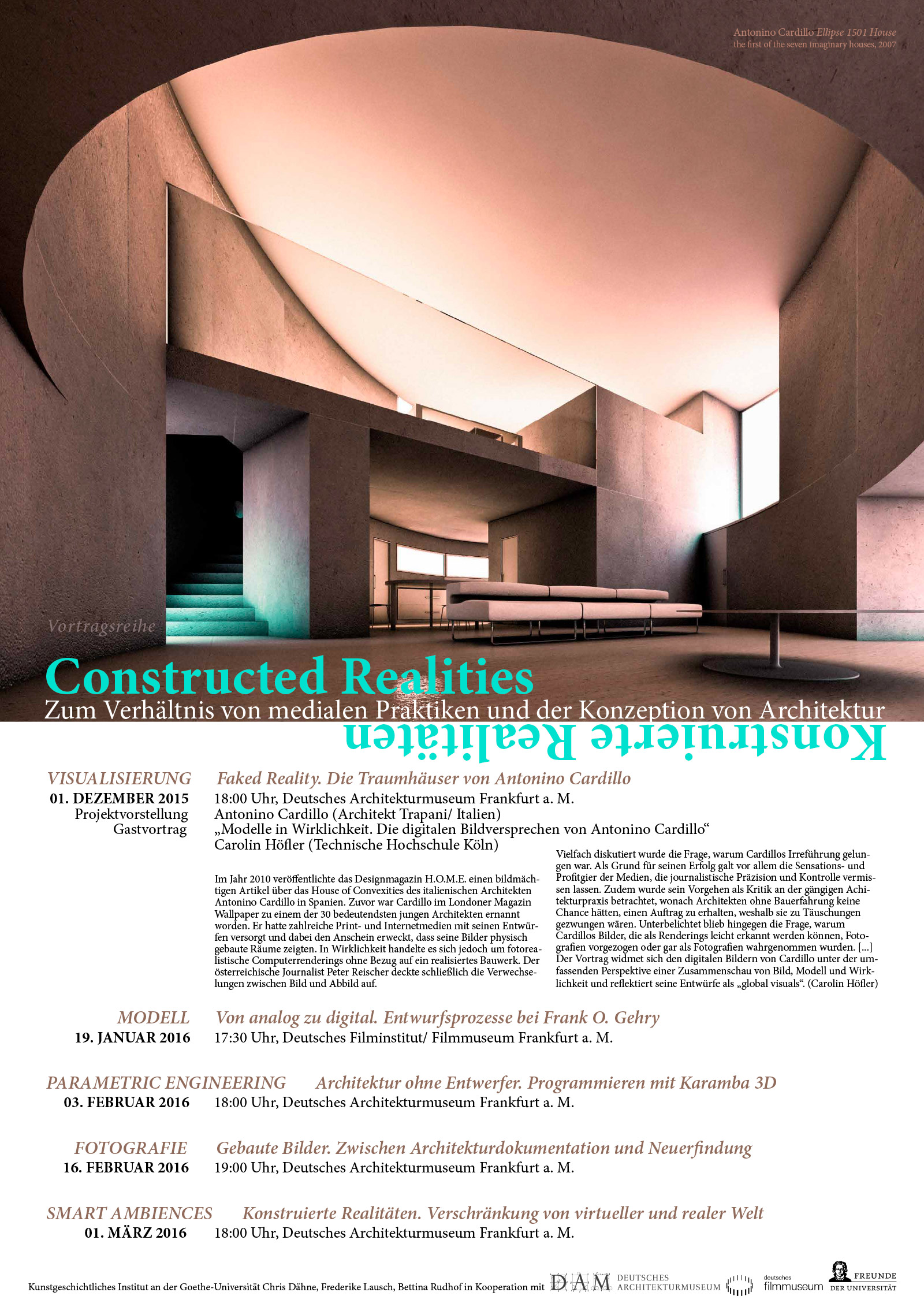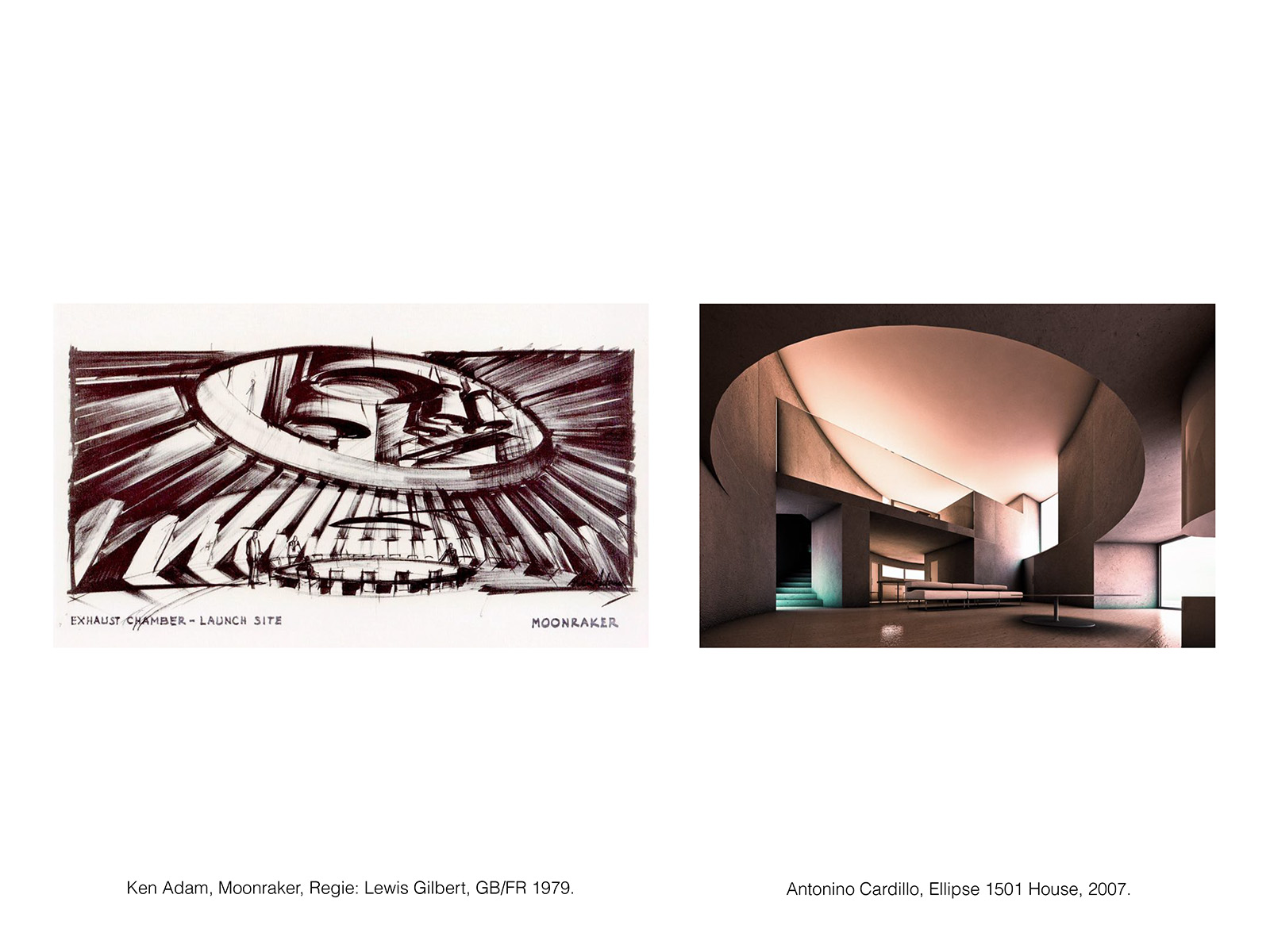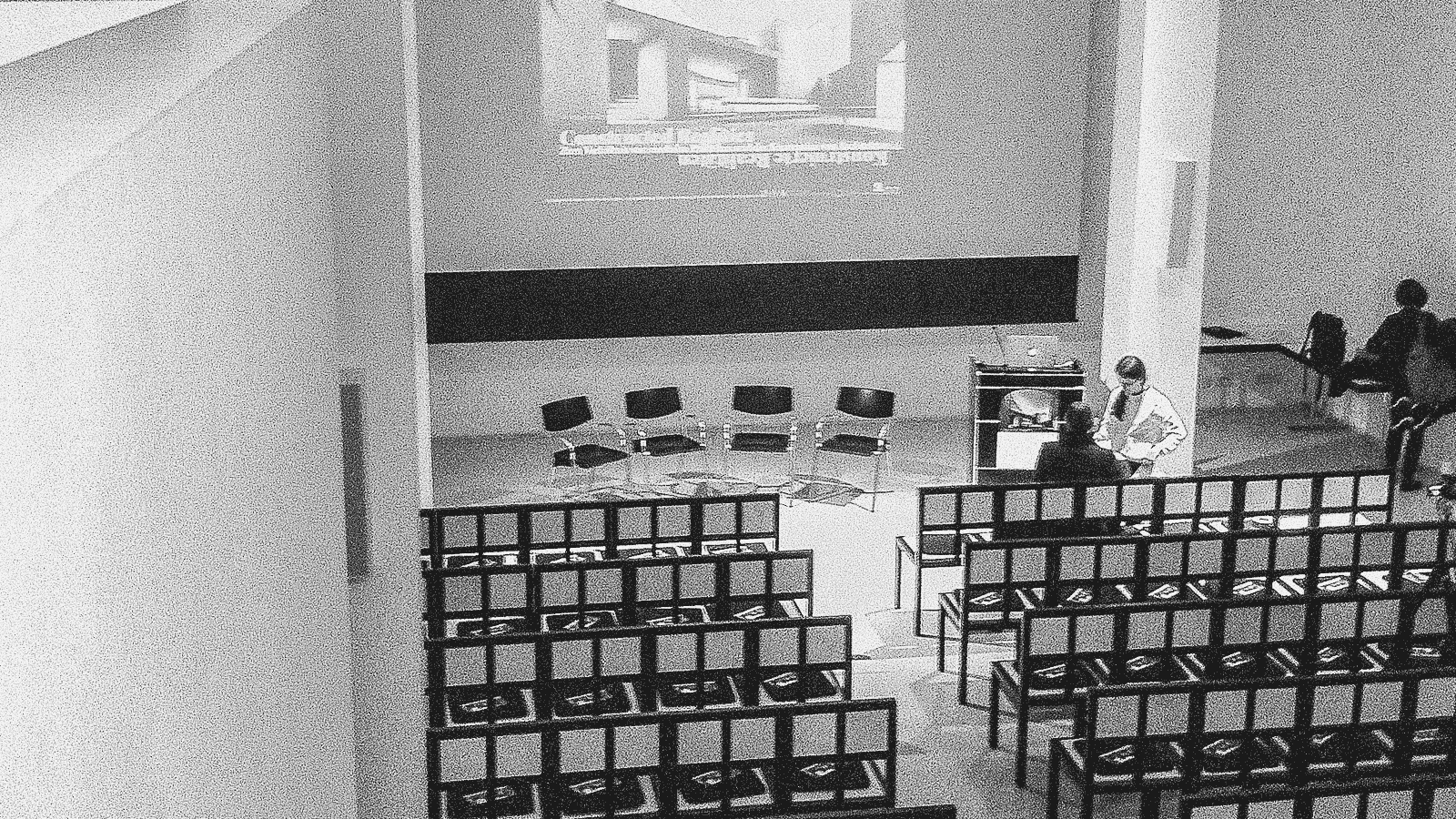
Constructed Realities
Deutsches Architekturmuseum, Frankfurt am Main,
The lecture Faked reality is part of the Constructed Realities series by Goethe University at the German Architecture Museum in Frankfurt am Main, alongside Models in Reality by Carolin Höfler
Series
Chris Dähne, Frederike Lausch, Bettina Rudhof
The Elbphilharmonie already exists. 12 years ago, it was presented to the public in the glossy magazines and digital architecture portals and has therefore long since become a reality in our minds and part of our image of the HafenCity of Hamburg. It is questionable whether we will still feel the need to see them in real life after their completion. Is the audience’s desire for reality through the visual media already satisfied? Would the perception of the building give us something new, something we desire?
Starting from a medium of architectural discipline—the model, visualisation, photography, parametric programming and smart ambiences—on the one hand, the complex interrelationship between the understanding of architecture and its media devices is to be addressed. On the other hand, it is important to investigate the influence of these media practises on the perception and confrontation with the real presence of the building. Why do we still have to deal with the building when we can look at design descriptions and representations presented to us much earlier?
Therefore, the question arises as to what happens to our conception of architecture under the influence of certain media practises. How much do images of architecture deceive us? Or do we mimetically construct our reality via the media and what are the consequences?
Constructed Realities: lecture series
- VISUALISATION
Faked reality. The Dream Houses of Antonino Cardillo
1st December 2015, German Architecture Museum
Introduction: Chris Dähne and Frederike Lausch
Project Presentation: Antonino Cardillo (Architect, Trapani, Italy)
Guest Lecture: Carolin Höfler (Technical University of Cologne)
Discussion / Moderation: Chris Dähne and Frederike Lausch - MODEL
From Analogue to Digital. Design Processes by Frank O. Gehry
19th January 2016, German Film Institute / Film Museum - PARAMETRIC ENGINEERING
Architecture without Designers. Programming with Karamba 3D
3rd February 2016, German Architecture Museum - PHOTOGRAPHY
Constructed Images. Between Architectural Documentation and Reinvention
16th February 2016, German Architecture Museum - SMART AMBIENCES
Constructed Realities. Interweaving Virtual and Real Worlds
1st March 2016, German Architecture Museum

Models in Reality
Carolin Höfler
In 2010, the design magazine H.O.M.E. published a visually powerful article about the House of Convexities of the Italian architect Antonino Cardillo in Spain. Previously, Cardillo had been named one of the 30 most important young architects in the London magazine Wallpaper*. He had supplied numerous print and Internet media with his designs and gave the impression that his pictures showed physically built rooms. In reality, however, it was photorealistic computer rendering without reference to a realised building. The Austrian journalist Peter Reischer finally uncovered the confusion between the images. […]

Faked reality
Antonino Cardillo
Every story claims to be true. So what do we talk about when we talk about reality? And what do we talk about when we talk about fakes? Is Architecture imagination? Does it have a literary nature? Is it an attempt to understand the invisible? Is Architecture an idea? Or is it just a strategy to support business and developing? So what are we talking about when we talk about Architecture? […]

Publications
- Carolin Höfler, ‘Hyper desire’, paper presented to the Wunsch, Technische Hochschule Köln, Cologne, 1 June 2016.
- Carolin Höfler, ‘Modelle in Wirklichkeit. Die digitalen Bildversprechen von Antonino Cardillo’, paper presented to the Constructed Realities, ed. Chris Dähne, Frederike Lausch, Bettina Rudhof, Goethe‑Universität, Deutsche Architekturmuseum, Frankfurt am Main, 1 Dec. 2015; transcript published on antoninocardillo.com, 24 April 2022.
- Antonino Cardillo, ‘Faked reality’, paper presented to the Constructed Realities, ed. Chris Dähne, Frederike Lausch, Bettina Rudhof, Goethe‑Universität, Deutsche Architekturmuseum, Frankfurt am Main, 1 Dec. 2015; transcript published on antoninocardillo.com, 12 May 2021.
- Anonymous, ‘Fake reality: Antonino Cardillo spricht in Frankfurt’, baunetz.de, Berlin, 27 Nov. 2015.
- Carolin Höfler, ‘Faked Reality: Die Traumhäuser von Antonino Cardillo (Frankfurt a.M., 1 Dec 15)’, arthist.net, Berlin, 11 Nov. 2015.
- Carolin Höfler, ‘Visualisierungen: Faked Reality: Die Traumhäuser von Antonino Cardillo’, DAM Deutsche Architekturmuseum, Frankfurt am Main, Nov. 2015.
- Anonymous, ‘Visualisierungen: Faked Reality: Die Traumhäuser von Antonino Cardillo’, Goethe‑Universität, Frankfurt am Main, Nov. 2015.